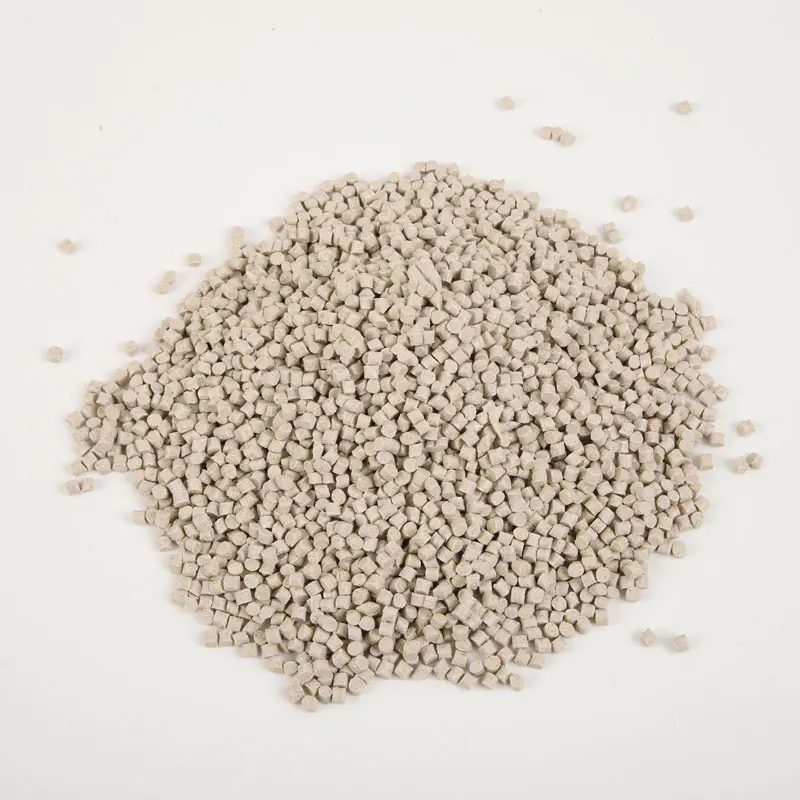The Rise of Bio-Based Plastics: A Sustainable Alternative for the Future
2025-02-06
Plastic has been an integral part of our daily lives for decades, offering convenience, durability, and versatility. However, the environmental impact of traditional plastics—made from petroleum—has led to growing concerns about pollution, resource depletion, and climate change. This has sparked a search for more sustainable materials, leading to the rise of bio-based plastics as an eco-friendly alternative.
Bio-based plastics are made from renewable biological resources such as plants, algae, or microorganisms. Unlike conventional plastics, which are derived from fossil fuels, bio-based plastics can be produced from a variety of plant-based sources like corn, sugarcane, or cellulose. In addition to being biodegradable in some cases, bio-based plastics have the potential to reduce our reliance on non-renewable resources and minimize the carbon footprint associated with plastic production.
The Benefits of Bio-Based Plastics
1. Reduced Carbon Footprint
One of the key advantages of bio-based plastics is their reduced environmental impact. Because they are made from renewable resources, their production often releases fewer greenhouse gases compared to traditional plastic. In some cases, bio-based plastics can absorb carbon dioxide during their growth phase, which helps offset emissions.
2. Biodegradability and Compostability
Unlike traditional plastics that can take centuries to decompose, certain bio-based plastics are biodegradable or compostable. This means they can break down more quickly in natural environments, reducing the amount of waste that ends up in landfills or oceans. Products made from bio-based plastics, such as food packaging or single-use cutlery, have the potential to lessen the burden on waste management systems.
3. Reduced Dependence on Fossil Fuels
By shifting from petroleum-based plastics to bio-based alternatives, we can reduce our dependence on fossil fuels. The use of renewable plant resources not only conserves non-renewable fossil fuels but also promotes sustainable agricultural practices, providing opportunities for farmers to grow crops specifically for plastic production.
4. Supporting Circular Economy Models
Bio-based plastics play a role in fostering a circular economy, where resources are reused, recycled, or composted. Some bio-based plastics are designed to be part of a closed-loop system, where they can be recycled into new products or composted to create nutrient-rich soil for farming. This contributes to reducing waste and promoting more sustainable consumption.
Types of Bio-Based Plastics
1. Polylactic Acid (PLA)
PLA is one of the most well-known bio-based plastics, derived from fermented plant sugars, usually from corn or sugarcane. It's commonly used in food packaging, disposable cutlery, and 3D printing. PLA is compostable under industrial conditions, making it an attractive option for reducing plastic waste.
2. Polyhydroxyalkanoates (PHA)
PHA is a biodegradable plastic produced by bacteria that feed on organic materials. It's used in medical applications, packaging, and agricultural films. PHAs are particularly notable for their ability to degrade in marine environments, making them a potential solution to ocean plastic pollution.
3. Bio-Polyethylene (Bio-PE)
Bio-PE is a bio-based version of polyethylene, the most commonly used plastic for products like bottles and bags. Made from sugarcane, Bio-PE has similar properties to traditional polyethylene but with a lower carbon footprint. It is recyclable and can be used in the same ways as its petroleum-based counterpart.
4. Bio-Based Polyethylene Terephthalate (Bio-PET)
Bio-PET is derived from renewable resources such as plant sugars and is used in products like water bottles, clothing, and textiles. While not entirely biodegradable, Bio-PET offers a more sustainable alternative to conventional PET by reducing the amount of fossil fuels needed for its production.
Challenges to Widespread Adoption
While the potential for bio-based plastics is promising, there are several challenges to their widespread adoption:
1. Production Costs
Bio-based plastics are often more expensive to produce than petroleum-based plastics. This is due to the higher cost of raw materials, the complexity of production processes, and the need for specialized infrastructure. As demand increases and technology improves, it's expected that the cost of production will decrease.
2. Limited Availability and Scalability
Currently, the production of bio-based plastics is limited to certain regions and applications. Scaling up production to meet global demand while maintaining environmental sustainability presents a significant challenge. The need for large-scale agricultural production of crops for bio-based plastics could also raise concerns about land use, water consumption, and food security.
3. Performance and Durability
While bio-based plastics perform well in many applications, they may not always match the durability and strength of traditional plastics. Some bio-based materials are more prone to degradation, which limits their use in products that require long-lasting durability.
The Future of Bio-Based Plastics
The future of bio-based plastics is promising, as both consumers and manufacturers are becoming more aware of the environmental costs of plastic pollution. As research and development in this field continue to grow, new innovations are likely to improve the performance, affordability, and scalability of bio-based plastics. Additionally, government policies and corporate initiatives are pushing for sustainable alternatives, providing incentives for the adoption of bio-based materials.
The rise of bio-based plastics represents a step in the right direction toward reducing our reliance on fossil fuels, minimizing plastic waste, and promoting a more sustainable future. As we continue to innovate and embrace sustainable alternatives, bio-based plastics have the potential to revolutionize the way we use materials and protect our planet for future generations.
Conclusion
Bio-based plastics offer a sustainable solution to the global plastic crisis, with numerous environmental, economic, and social benefits. By embracing renewable resources, reducing carbon emissions, and promoting biodegradability, bio-based plastics have the potential to play a key role in reshaping the future of materials and reducing our environmental footprint. As technology advances and consumer demand for sustainable products grows, the widespread use of bio-based plastics may soon become a cornerstone of a more sustainable, circular economy.



